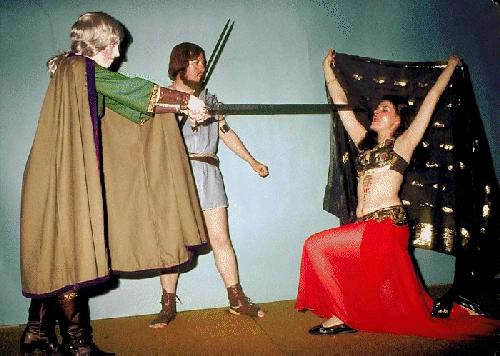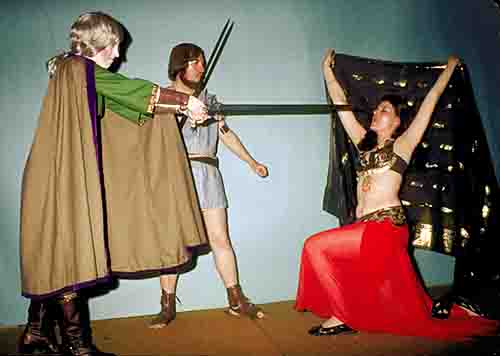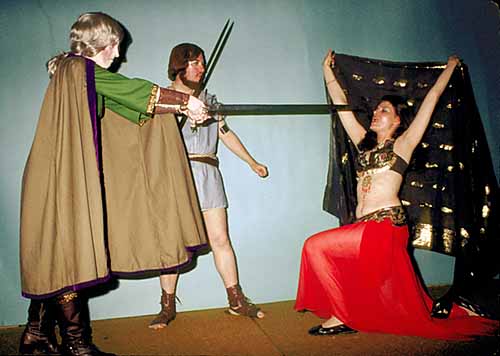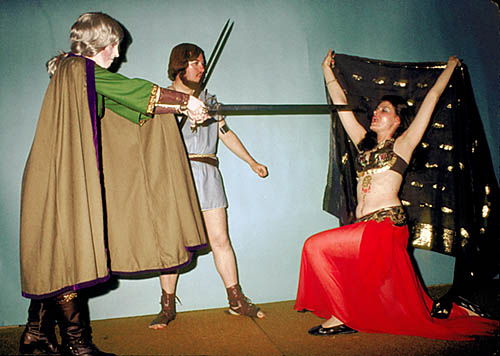Introduction
When I look at photos, my eye is often drawn to things I consider flaws. (We’re talking art here, so everything is subjective; so I won’t be repeating “I consider” over and over again throughout this article, I’ll just pretend my preferences are definitive.) Finding the good aspects often takes me more conscious effort. Thus my critiques tend to be about technical deficiencies.
Having an eye that leaps to faults isn’t necessarily a good thing. If you let a few faults ruin something for you, you’ll miss a lot of the good things in life, because very few good things are actually flawless; and sometimes the flawless things don’t have so many positive attributes, either.
It can be useful; a copy-editor who can find the hidden wrong word on a page at a glance is a jewel, and it’s useful in lots of other jobs involving separating wheat from chaff in bulk (or the artistic equivalents).
My favorite art (in many media) doesn’t so much have fewer flaws than other works; what makes it a favorite is that it has more good things about it (and not so many flaws, or so serious, as to interfere with my enjoyment).
Looking at a lot of photos on the web, largely current and historical snapshots, I’m somewhat bothered, though, by the relatively low technical quality many people seem to be satisfied with. I haven’t had extended discussions with many of these people; it’s a somewhat touchy subject, perhaps particularly for me to raise. So I don’t really know in general if their standards are different from mine, or their eyes just less trained to noticing these things, or they haven’t acquired the skills (or the tools) to do some of the fixup work I routinely do, or their vision is simply enough worse than mine that the differences are moot (my vision isn’t anything special these days). Probably each of those reasons applies to somebody, and some others I haven’t thought of.
What I’m going to attempt to do here is improve some of your ability to notice differences that you can easily see (that’s the distinction between brain and eye, roughly, okay?). Also, this article will serve as an example I can point people to from in-person discussions when we’re talking about what flaws people do and don’t see.
At least one person will, if they read it, recognize this article as springing from some online and email discussions we have had. I’d be happy to credit you here with kicking off this train of thought in my head, and with providing the example I start from (please let me know!). On the other hand, I very much want this article not to be taken by you or anybody else as an attack on you or your methods of handling photos, and the best way I can think of to achieve that is to not associate your name with it. I am emailing that person to point this article out, so I’m not talking behind anybodies back. So can everybody else please leave it at that? Thanks.
I’m using the example I am because it’s my photo, and because this particular copy of it exhibits several interesting artifacts in fairly extreme form. Some of them I haven’t managed to reproduce, so I can’t easily do “the same thing” to another photo. Since it’s my photo, I have access to much larger and uncompressed versions, as good as they came off the scanner, which makes it possible for me to prepare a “good” copy to compare to the others. I’ll point out that this originated on slide film in 1972; it has grain, and the exposure wasn’t perfect to begin with.
I’m using a Javascript routine to flip back and forth between two photos on top of each other when you move the mouse over the photo. I find that the ability to flip between the photos in the same space very quickly is extremely useful in seeing differences between two similar photos, useful enough that I’m willing to make this page dependent on Javascript for it.
Badly Compressed Image
So, consider this image (don’t move your mouse over it yet). Technically, does it seem good to you? Sharp? Clear? Make yourself a little list of any defects you find. Then mouse over the image, and read on below.

Here are some of the things I immediately notice, keyed to the letters on the annotated photos:
A: Definite “stair-steps” on both sides of the sword and, to a lesser extent, its shadow. Also, some ghostly jpeg artifacts a few pixels away from the sword edges.
B: Severe jpeg artifacts above the edge of the sleeve. Also, the color of the sleeve itself is roughly dithered, rather than smooth.
C: Blatantly dithered area in the background.
D: Blatantly dithered area in the skin. Also the decoration hanging from the middle of the top is very hashed up.
E: Blatantly dithered area in the floor.
These aren’t everything, but they’re examples of the major types of problems, and some of the easiest to see. You can see additional stair-stepping in the upper line of the cloak against the background at left, more dithering in the leg of the man in the middle and the woman, and jpeg artifacts around just about all the edges.
Now that I’ve drawn your attention to them, let me give you a way to flip between the bad version and a relatively clean version. (Mouse-over to see clean version.)

Examples of Different Jpeg Levels
Finally, let me show you the same photo at a variety of jpeg compression levels (the levels given are Photoshop CS2 numbers; there’s no standard way of expressing jpeg compression settings, which means you can’t compare numbers between programs in any meaningful way). Each image will flip to jpeg level 10 when you mouse over it, as the closest thing to a really clean version suitable for online use.
Jpeg 0

Jpeg quality 0 has lots of visible artifacts, especially in any large areas of fairly even color. Rectangular blocks should be very visible in this version. The artifacts beside the sword are also pretty blatant.
Jpeg 3

Already at quality 3, most of the most blatant block artifacts in the areas of even color are gone. You can still find very visible artifacts near any sharp detail edge, though.
Jpeg 7

Quality 7 is darned good; but if you look carefully, you’ll see some small artifacts, closer to the real detail edges, that go away when you flip to quality 10. (Averted vision may make the changes easier to spot; your peripheral vision is specialized for noticing movement off the main visual axis.)
Conclusions
Well, that’s mostly your job. Can you see these differences at all? Do you notice them without effort? Do you notice them when trying to look at a photo closely (what if somebody asked you whether the decoration in the middle of the woman’s chest was a pendant, or a tatoo, could you tell?).
When I pull up old scanned photos from pre-digital times I have
to explicitly ignore artifacts. And really even with modern
digital cameras I’m not good enough to produce art, just
memories.
BTW, I always find it interesting when I find an old friend that
has an RSS feed. Syndicating is like an auto-reminder of
something that I forgot to check on for years.
Cheers!
John Mellby
Good to see you pop up!
Working with scans of my old negatives is interesting. Sometimes I can make much better images now from them than I could then. Other times I can only see the problems.